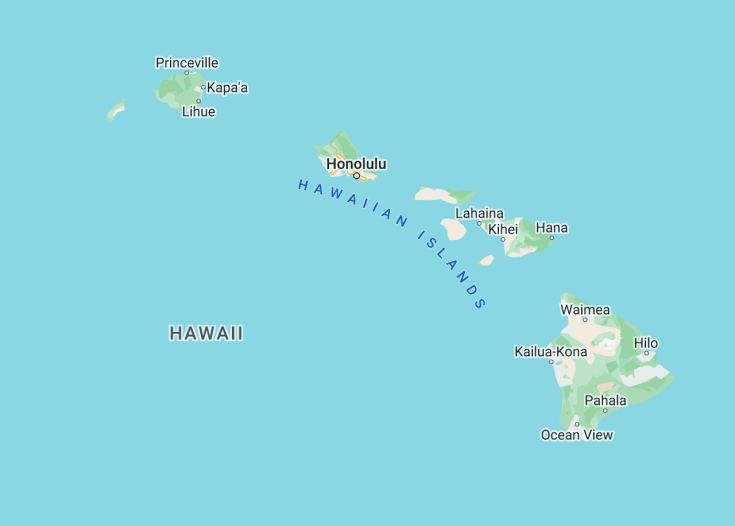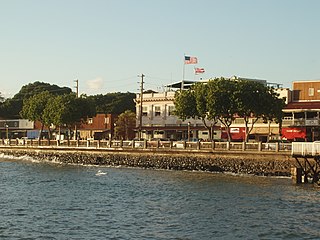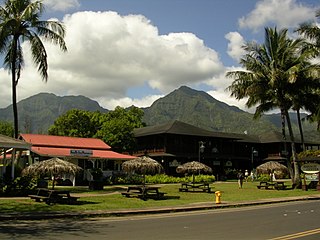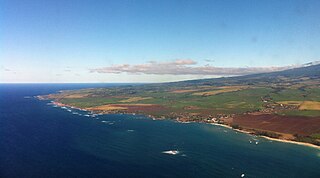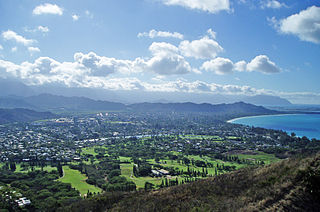Hawaii, the 50th state of the USA, is a tropical paradise in the Pacific Ocean. With its stunning landscapes, pristine beaches, and unique culture, it is no wonder that Hawaii is a dream destination for many travelers. From the active volcanoes of the Big Island to the lush rainforests of Kauai, there is something for everyone to enjoy in this island paradise. Immerse yourself in the spirit of Aloha and discover the beauty and charm of Hawaii.
If you’re planning a trip to Hawaii, don’t forget to try the famous local dishes like poke and shave ice.
While visiting Hawaii, make sure to take a helicopter tour to witness the breathtaking views of the island’s volcanic landscapes from above.
Top destinations in Hawaii (USA)
Hawaii (USA): The Paradise of the Pacific
| Capital | Honolulu |
| Time in Hawaii (USA) | GMT-10:00 |
| Language spoken | English, Hawaiian |
| Population | 1,416,000 (United Nations, 2021) |
| Religion | Christianity (44.6%) Unaffiliated (32.4%) Other religions (12.7%) Eastern religions (6.2%) Islam (1.9%) |
| Currency | United States Dollar (USD) |
| Airports | Daniel K. Inouye International Airport KAHULUI AIRPORT Lihue Airport Kailua-Kona International Airport Hilo International Airport |
Hawaii, the Paradise of the Pacific, is a stunning archipelago located in the Central Pacific. Consisting of numerous islands, including the famous Oahu, Maui, and Big Island, Hawaii is renowned for its breathtaking natural beauty, vibrant culture, and warm hospitality.
With a population of over 1.4 million people, Hawaii is a melting pot of cultures and languages. English and Hawaiian are the official languages spoken on the islands, reflecting the rich heritage of the indigenous Hawaiian people and the diverse immigrant communities that have settled there.
Hawaii’s geographical location grants it a unique time zone. The islands operate on Hawaii Standard Time (GMT-10:00), making it one of the most remote places in the world.
Renowned for its stunning beaches, lush rainforests, and majestic volcanoes, Hawaii offers a paradise-like escape for visitors. The islands are home to diverse ecosystems and rare wildlife, making them a hub for nature enthusiasts and adventure seekers.
The history of Hawaii is deeply rooted in Polynesian culture and traditions. These islands were first settled by Polynesians who navigated across the vast Pacific Ocean in canoes. The arrival of Western explorers and missionaries shaped the islands’ history, leading to the establishment of a constitutional monarchy in the 19th century. Later, Hawaii became a U.S. territory and eventually achieved statehood in 1959.
Where is Hawaii located?
Hawaii, the 50th state of the United States, is located in the Central Pacific, approximately 2,400 miles southwest of California.
What is Hawaii famous for?
Hawaii is famous for its stunning beaches, tropical landscapes, and vibrant culture. It is known for its world-class surfing, breathtaking sunsets, and the aloha spirit, which embraces warmth, generosity, and hospitality towards visitors.
History
The history of Hawaii (USA) dates back to its ancient Polynesian roots. The islands were first settled by Polynesians from the Marquesas Islands around the 4th century AD. These early settlers thrived in the fertile land and abundance of natural resources. Hawaii was divided into separate chiefdoms, each ruled by a chief or ali’i, who held both political and religious power.
In 1778, British explorer Captain James Cook became the first European to visit Hawaii. His arrival marked the beginning of significant changes for the Hawaiian Islands. European and American traders, whalers, and missionaries soon followed, bringing new technologies, diseases, and cultural influences.
(1810-1893) The Kingdom of Hawaii
In 1810, King Kamehameha I unified the Hawaiian Islands under a single monarchy, establishing the Kingdom of Hawaii. The kingdom saw significant economic and cultural growth, with the cultivation of sugarcane and the arrival of missionaries who introduced Christianity. However, foreign influence also increased, leading to conflicts between the Hawaiian monarchy and foreign powers.
In 1893, a group of American businessmen and sugar planters, with the support of the United States government, overthrew Queen Lili’uokalani in what is known as the “Overthrow of the Hawaiian Kingdom.” The kingdom was then replaced by a provisional government, followed by the Republic of Hawaii.
(1898-1959) Annexation and Statehood
In 1898, the United States formally annexed Hawaii, making it a territory of the United States. The islands became strategically important for the U.S. military, particularly during World War II. The attack on Pearl Harbor in 1941 led to the United States’ entry into the war.
After the war, Hawaii experienced economic growth and became a popular tourist destination. In 1959, Hawaii became the 50th state of the United States, marking a significant milestone in its history.
(1960-Present) Modern Hawaii
In the second half of the 20th century, Hawaii underwent rapid economic development and urbanization. The tourism industry boomed, drawing visitors from around the world to its stunning natural landscapes, pristine beaches, and vibrant culture.
Today, Hawaii continues to thrive as a major tourist destination, known for its stunning beaches, rich cultural heritage, and diverse ecosystems. The state also faces challenges such as overpopulation, environmental conservation, and preserving its unique indigenous culture.
Visit Hawaii (USA)
What to see and do in Hawaii (USA)
When visiting Hawaii, there are countless attractions and activities to experience. Here are some of the must-see and must-do things in Hawaii:
- Explore the breathtaking beaches, including Waikiki Beach, Hanauma Bay, and Lanikai Beach.
- Visit the iconic Pearl Harbor and learn about its historical significance.
- Hike to the top of Diamond Head for panoramic views of Honolulu and the Pacific Ocean.
- Take a scenic drive along the Road to Hana on Maui, marveling at the lush landscapes and waterfalls.
- Snorkel or dive in the crystal-clear waters of Molokini Crater.
- Experience traditional Hawaiian culture at a luau, featuring music, hula dancing, and delicious local cuisine.
- Explore the Volcanoes National Park on the Big Island and witness the awe-inspiring power of active volcanoes.
- Go whale-watching during the winter months when humpback whales migrate to the warm waters of Hawaii.
Events in Hawaii (USA)
Hawaii hosts a variety of events throughout the year. Here are some notable ones:
- Honolulu Festival (March): A celebration of the diverse cultures of Hawaii and the Pacific region through music, dance, and arts.
- Molokai Ka Hula Piko (May): A traditional hula festival that showcases the rich cultural heritage of hula dance in the birthplace of hula.
- Hawaii Food & Wine Festival (September): A culinary extravaganza featuring renowned chefs, tastings, and culinary events celebrating Hawaii’s unique cuisine.
- Kona Coffee Cultural Festival (November): A week-long celebration of Kona’s world-famous coffee, featuring tastings, workshops, and live entertainment.
These events provide opportunities for visitors to engage with the local culture and experience the vibrant atmosphere of Hawaii.
Best time to visit Hawaii (USA)
The best time to visit Hawaii is during the shoulder seasons of spring (April to June) and fall (September to November). During these months, the weather is generally pleasant, with warm temperatures and fewer crowds. This allows visitors to enjoy the beaches, outdoor activities, and popular attractions without the peak tourist rush.
However, it’s important to note that Hawaii’s tropical climate means that it can be visited year-round. The winter months (December to February) offer cooler temperatures and are ideal for whale-watching, while the summer months (June to August) are a popular time for surfing and other water sports.
It’s recommended to check the specific weather conditions and events happening during your desired travel dates to make the most of your visit to Hawaii.
Is Hawaii (USA) worth visiting?
Hawaii is undeniably worth visiting for its stunning natural beauty, rich cultural heritage, and diverse range of activities and attractions. The islands offer a unique blend of tropical paradise, vibrant culture, and outdoor adventures.
From its world-famous beaches and lush landscapes to its fascinating history and warm hospitality, Hawaii provides a captivating experience for travelers. The aloha spirit, which embraces kindness, harmony, and respect, is deeply embedded in the local culture and adds an extra layer of charm to the destination.
However, it’s important to note that Hawaii can be quite expensive, especially when it comes to accommodations and dining. Additionally, the islands can get crowded, particularly during peak tourist seasons. It’s advisable to plan and book in advance to ensure the best possible experience.
If you’re seeking a paradise getaway with a mix of relaxation, outdoor activities, and cultural exploration, Hawaii is definitely worth considering. Its unique beauty and captivating spirit continue to attract millions of visitors each year.









